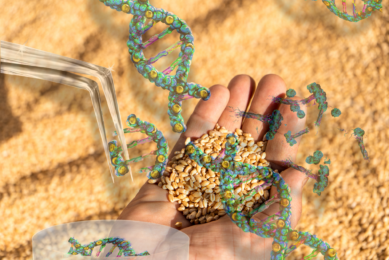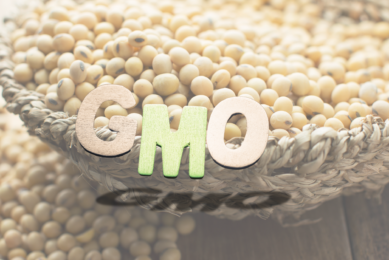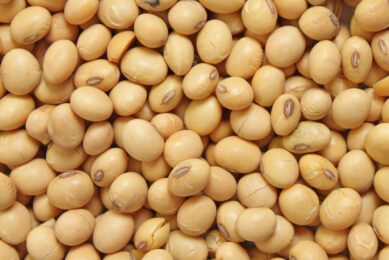GMO in feed: Market update

New developments in Mexico, China and Europe show shifts in GMO crop production for feed
GMO crops are widely used in livestock feed in Canada, the US and many other countries. This is because many studies have shown no clear evidence that feed composed of GMO crops has any adverse effects on animal health.
However, the regulation and use of GMO crops in feed remains controversial in some jurisdictions and the issue continues to evolve around the globe.
On February 13, 2023 for example, Mexico backed down on a deadline of January 2024 that its government had put in place to ban the use of GMO corn in livestock feed.
The initial response was what the US Secretary of Agriculture Tom Vilsack had been hoping for. In November 2022, he threatened Mexico with legal steps under the US-Mexico-Canada (USMCA) trade pact, if the ban wasn’t lifted by February 14.
However, the issue is far from resolved
Mexican corn imports
To get the lay of the land in terms of corn flowing south from the US, Sarah Gonzalez, Director of Communications at the National Grain and Feed Association (NGFA), explains that “Mexico imports around 40% of its corn needs, with 90% of that coming from the US and a majority being GMO. Mexico is the largest destination for US corn exports (followed by China), accounting for 27% of all US corn exports in the marketing year 2021/22 in terms of volume.”
Science-based decisions?
In terms of Mexico’s current biotechnology policy, NGFA does not consider it grounded in science, and science is the foundation of the US-Mexico-Canada Agreement (USMCA).
“Agricultural industry stakeholders and US government officials have consulted with Mexico on its biotech corn restrictions since 2020 when Mexican President Andrés Manuel López Obrador initially issued a decree to phase out using and importing genetically-modified corn and other products,” explains Gonzalez.
“Mexico’s latest adjustments to this decree still fall short of its trade agreement obligations. The USMCA includes a chapter on Sanitary and Phytosanitary Measures. Under USMCA, Mexico has an obligation to ensure these measures are based on relevant scientific principles and are applied only to the extent necessary to protect human, animal and plant health.”
US Ambassador to Mexico Katherine Tai sent a letter in early March to the Mexican government outlining how Mexico’s policies are threatening to disrupt billions of dollars in agricultural trade and hinder innovations necessary to tackle the climate crisis and address food security challenges. For its part, Gonzalez says NGFA supports all attempts by the US Trade Representative and the US Department of Agriculture to reach a solution with Mexico through the USMCA consultation process and to take formal steps to enforce US rights if necessary.
Now legal – GMO corn planting in China
Meanwhile, China has just announced that for the first time, it will allow GMO corn to be legally planted this year. However, a Reuters report states that according to data released by the Chinese government in 2021, 70% of the corn acreage in China’s main crop-growing region is currently illegally-grown GMO corn.
China already allows GMO cotton to be grown, as well as the import of GMO soybeans and corn for livestock feed.
The amount of GMO corn grown in China in 2022 won’t be much. According to Reuters, it will only be less than 1% of the nation’s corn fields, about 267,000 hectares or 660,000 acres. Some had expected it would be much higher.
It is not clear how much of this acreage will go to livestock feed versus food use.
However, Dr Alison Van Eenennaam of the Department of Animal Science at University of California, Davis, has noted that, globally, 70-90% of harvested GMO biomass is fed to animals.
Europe update
In Europe, calls continue for the use of GMO crops in food and feed, or at least those that are gene edited (plants with gene edits are grouped with GMO plants under current EU regulations). The European Council of Young Farmers, for example, is among many groups asking for reform.
The UK, which left the EU in 2020, has since allowed field tests of gene-edited crops. Now, a brand new report on gene-edited wheat has just been released, conducted by scientists at Rothamsted Research. It is the first field study of CRISPR-edited wheat anywhere in Europe.
The wheat was gene-edited to lower amounts of asparagine in the grain. During cooking, asparagine is converted to acrylamide, a potential carcinogen. The gene-edited wheat had asparagine levels up to 50% lower than the control variety.
In May 2022, the UK Parliament also passed legislation to support new crop breeding techniques. The ‘Genetic Technology (Precision Breeding) Bill’ removes ‘unnecessary barriers to research into new gene editing technology, which for too long has been held back by the EU’s rules around gene editing, which focus on legal interpretation rather than science – hindering the UK’s world leading agricultural research institutions.”
A look at trends
What global trends we will see in the next few years with GMO crop use in livestock feed is hard to determine. As far as China goes, some believe the government there will allow legal cultivation of GMO corn on a large scale going forward, but Europe’s GMO crop future is harder to predict.
Looking worldwide, Gonzalez notes that the demand for livestock products is increasing as the global population increases. “Nations that need to compete in the global marketplace by exporting or producing their own livestock feed will turn to the most efficient and effective crop technology,” she says. “Scientific advancements made through agricultural biotechnology, including biotech crops for livestock feed, allow for increased yields, high quality traits and targeted nutrition.”
“From a US perspective, NGFA supports the utilisation of modern biotechnology and other safe technologies and modern agricultural practices that enhance the production of safe, affordable, sustainable and saleable food and energy for US and world consumers. Further, we support US government-based authorisations as well as authorisations from US export markets, of modern biotechnology-enhanced products through application of a science- and risk-based, transparent and timely regulatory-approval process that evaluates the safety of such products for human and animal consumption, and for the environment.”
NGFA believes full transparency over what is being introduced into the marketplace will help the US maintain leverage in global trade.
“This is incredibly important to NGFA members because exports are the backbone of the US agricultural economy,” Gonzalez explains. “More than 20% of US agricultural production is exported. Sales of US agricultural products to foreign markets absorb about one-fifth of US agricultural production. In a typical year, grain exports are equivalent to around 30% of US grain production.”











